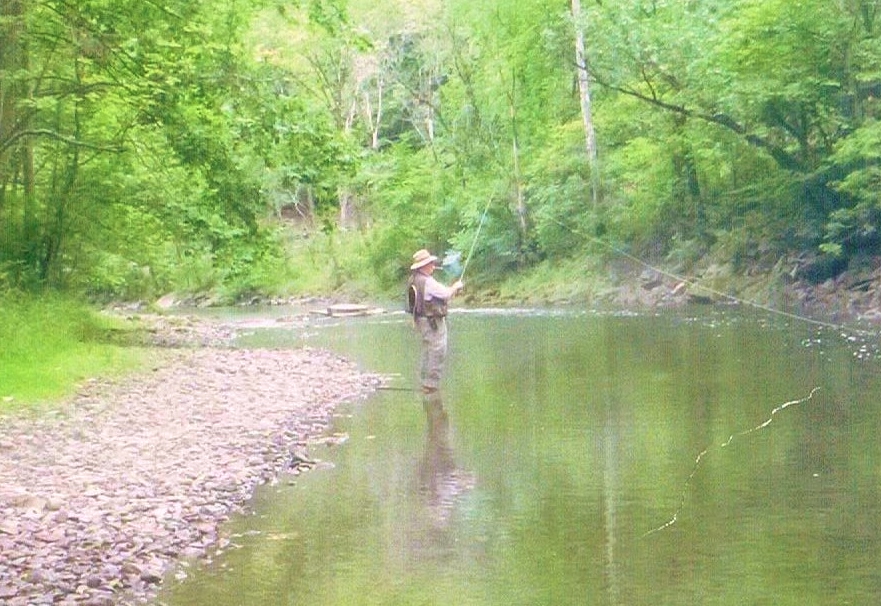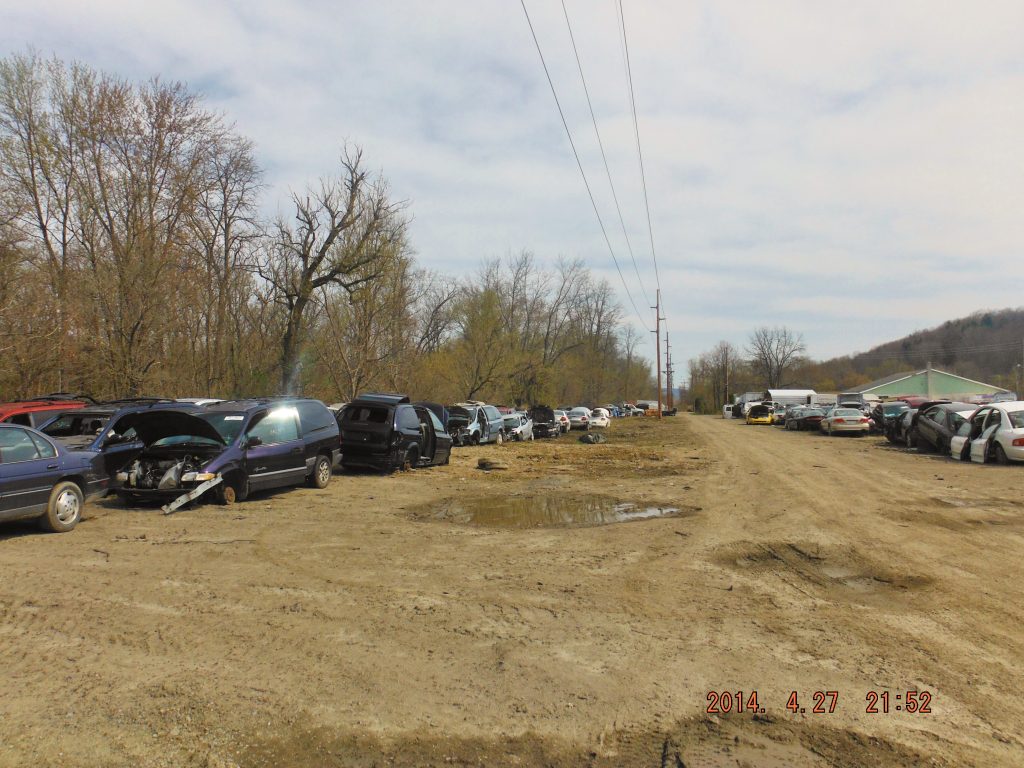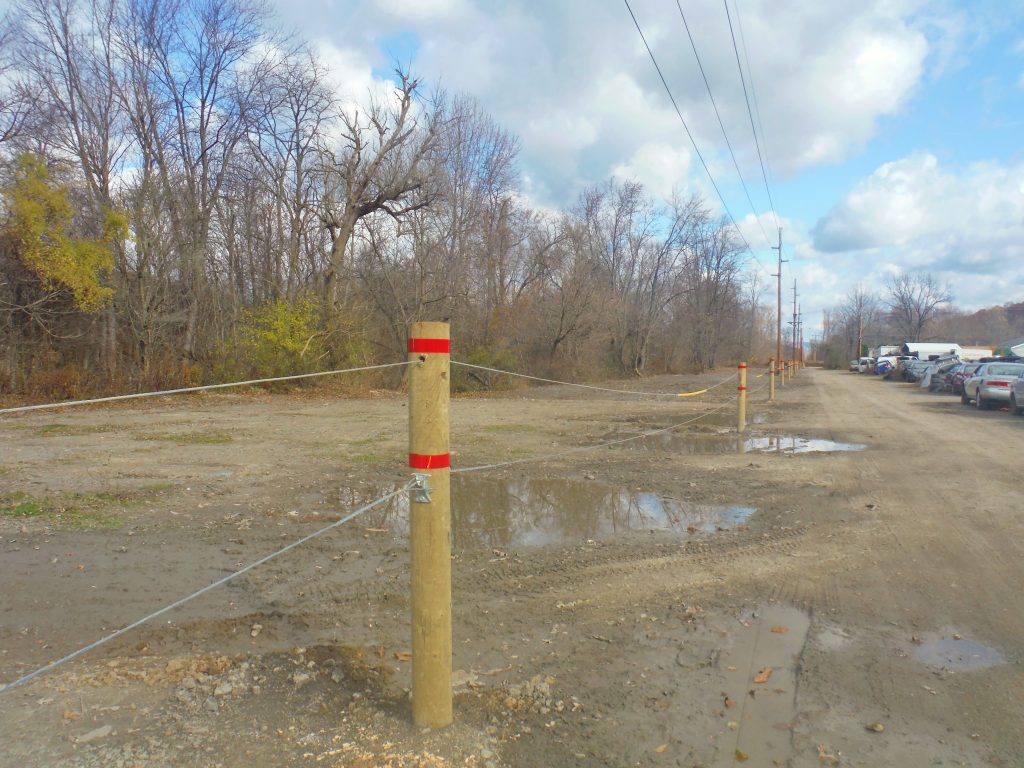Category: News
More great news for the J!
More great news for the J!

The LJRA is excited to announce that as a result of the June electroshocking survey (scroll down to the next page), PFBC will recommend that two sections of the J be classified as a wild Class A fishery. Being declared a wild Class A fishery is an important step towards gaining high quality cold water (HQCW) designated use status by PA-DEP. One location encompasses 4.5 miles of the upper J from Sandy Run to the Rt 220 bridge in Bellwood. The other 3.2 mile section is located on the lower J from the Barre bridge to the mouth of the Juniata River. 2016 has been an excellent year for the J!
In Memory of Dan Grobe
 Photo courtesy of Dan’s good friend and fishing buddy, Frank Gondos.
Photo courtesy of Dan’s good friend and fishing buddy, Frank Gondos.
Dan Grobe loved fly fishing the Little J. His family and friends have made donations to the Little Juniata River Association in his memory. Here is a photo of Dan taken near the “Road Springs” last spring.
Major source of trash thwarted
Polluting junk yard cleaned up


This site on the banks of the upper “J” was covered with junk from an auto salvage operation. LJRA worked with the legitimate landowner, First Energy, to get it cleared. We give our thanks to First Energy/Penelec for finally getting this done! This should greatly reduce the washing of tires and other auto-associated trash into the J during high water events.
Respect the landowner!
The Little Juniata River is 32 miles in length. It starts in the city limits of Altoona with the confluence of Spring Run and Kettle Creek, flows north to Tyrone, then east to the confluence near Alexandria. Of these miles,. All but a few miles,including Rothrock state forest, are privately owned. (LJRA has secured 4 miles of permanent public access on prime water by paying landowners for easements). Keeping good relations with these private landowners is a major priority for LJRA as it should be for all who wish to have access to this resource. Please respect the landowners rights ! If you see someone damaging signs or dumping trash, take down the license plate and report them immediately to law enforcement. Or report them to the LJRA leadership (we’ll take it to the Water Conservation Officer for prosecution). If you see a violation call 911 or 814 684 5922
Electroshocking survey on the upper J
Wild trout survey on the upper river yields encouraging results

We are pleased that Kris Kuhn, Fisheries Manager for the south central district, and his PFBC crew electroshock surveyed two 300 meter stretches of the upper J between Bellwood and Tyrone (upstream from the DHALO) on June 10th. Large numbers of brown trout were found at both both locations. (During the survey they captured one of our telemetry study fish -see picture below).
Observers, including LJRA officers, are hopeful that, once the results are totaled, more than a Class A population will have been found at both locations. Being declared a wild Class A fishery is a requirement for gaining high quality cold water (HQCW) Designated Use and the added protection that follows this designation by PADEP. Adding this very significant section of the upper J to HQCW designated use list is one big step forward towards meeting the LJRA goal of obtaining HQCW designation for the entire river.

These observations, together with the increasing presence of pollution intolerant mayflies and stoneflies throughout the river, are very exciting developments indeed!
Red Buds are showing color – March 27th.
If history is any predictor, Grannom caddis will start emergence within 3 days. In 2012 red buds accurately showed on March 21st. The first fishable hatch of grannoms came on March 23rd. Last year the red buds were late (April 16th) and so were the grannoms. They came on high water April 18th. and were not very fishable. I have tracked this relationship for many seasons….get your dries ready.
Bill
Grannoms updates moved to the forum. We are looking for patterns to post in the fly tying sections- JCR
Pint Night at Appalachian Outdoors!
Reminder this Friday!
Appalachian Outdoors in State College is hosting a Pint Night on Friday, April 1st from 6-8 PM. All proceeds will be donated to ClearWater Conservancy and The Little Juniata River Association to help support their river clean-ups coming up in the month of April. Free beer and wine will be provided. Activities include a silent auction, tying demonstrations and presentations about the activities of LJRA. We hope to see you all there!
Appalachia Outdoors is located at 123 S Allen St, State College, PA. For more information visit their website at: http://www.appoutdoors.com
New link to register for the forum!
A link to register for the forum can be found in the upper menu bar. It’s easy to do and only takes a few minutes. Instructions and other information to make the process easier can be found in a forum post.
goals
The Directors of the LJRA Announce New Goals for 2016
